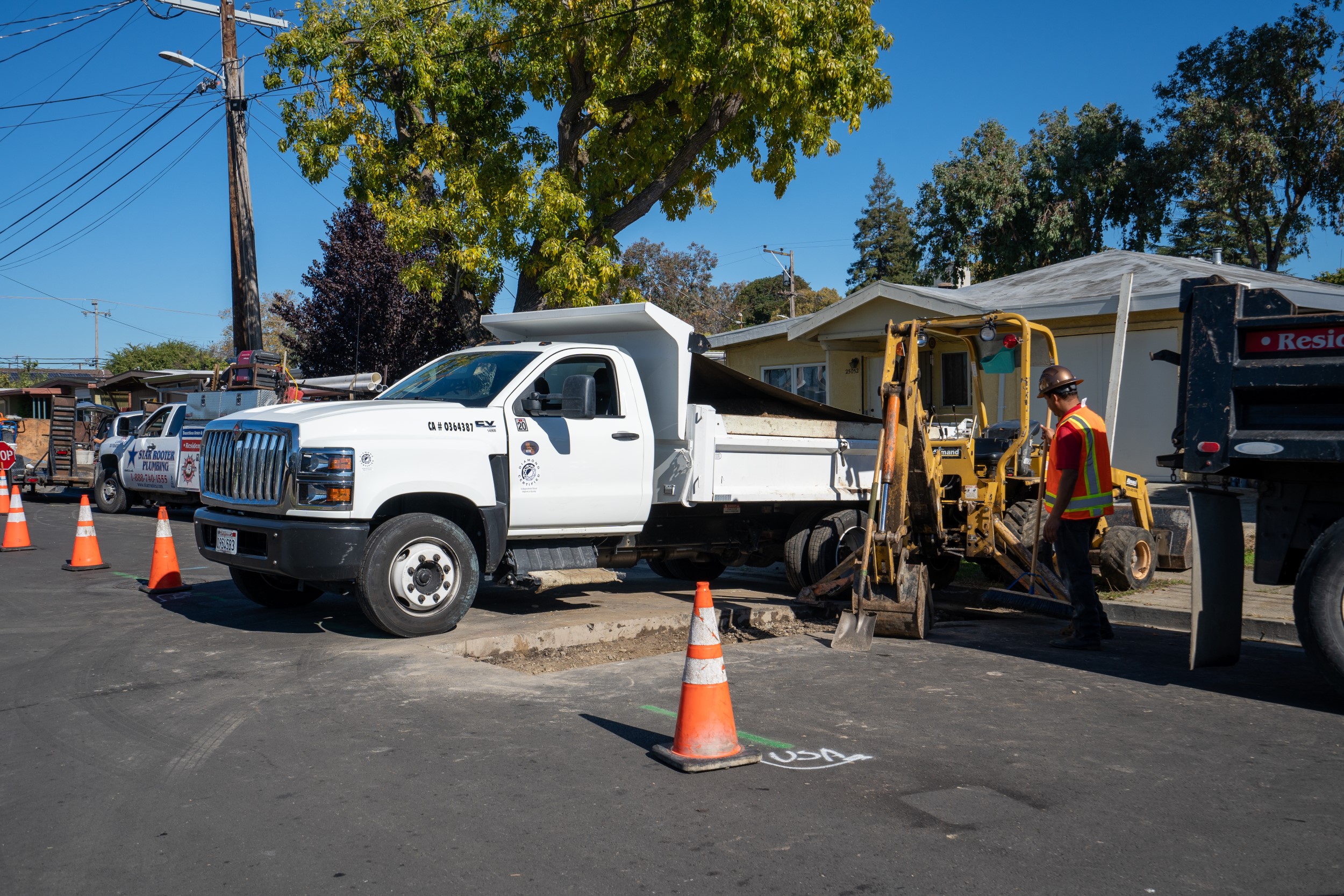
Is your home’s sewer system acting funny? If so, it’s likely a symptom of a larger underlying issue. Fortunately, thanks to innovations in plumbing technology, it’s now easier than ever to diagnose and repair sewer line problems. We talked to eight Diamond Certified Expert Contributors in the plumbing industry to get their insights on this topic.
Diagnosing Sewer Line Problems
In the past, diagnosing sewer line problems involved a fair amount of guesswork, due to the fact that sewer systems are situated underground. Thankfully, today’s plumbers have a key advantage: in-line camera technology. “In-line cameras enable plumbers to see the location and cause of a sewer line problem without having to dig an inch,” explains Tom Cortez, owner of Savior Plumbing, Inc. “Some of the things a plumber will look for during a video sewer line inspection include flat spots or bellies in the line where materials are prone to collect, breaks and obstructions caused by tree roots, and separations between pipes where connections have worn away or no longer align properly.”
Jonathan Millington, owner of Ace Plumbing and Rooter, says video sewer line inspections can also help prospective home buyers make sound purchases. “Before purchasing a home, buyers typically have a number of inspections performed, but one area that’s often overlooked is the sewer system. Sewer line problems can be expensive to fix, with major repair projects often falling into the $5,000 to $10,000 range. If a major problem is found during the video inspection, you’ll not only be spared an expensive surprise, but you’ll also have some additional bargaining power when negotiating the property’s sale price.”
Sewer Line Repair & Replacement
If the video sewer inspection reveals damage, you’ll need to consider your options for repairing or replacing the line. Hamid Rod Tehrani, owner of Absolute Plumbing and Drain, prescribes one possible repair solution for instances of minor damage. “If your sewer pipe only has minor damage, a plumber can descale the line and apply an epoxy to create a smooth surface and seal any cracks,” he explains. “This will increase the line’s lifespan and defer the need for more intensive repairs or replacement.”
Trenchless Sewer Replacement
If your sewer line has major damage, you’ll likely need to replace it. While in the past, this would involve excavating the entire pipe—an expensive, time-intensive and messy process—today, there’s a modern technique that circumvents the old inconveniences: trenchless sewer line replacement.
Ray Ramirez, field supervisor at Rooter Hero Plumbing, explains how this innovative technique works. “First, the plumber digs holes at two main access points—typically one near the house and one near the sidewalk where the pipe connects to the sewer main. Next, utilizing a method known as ‘pipe bursting,’ the new sewer line is hydraulically pulled through the existing cast iron or clay pipe, the latter of which acts as a kind of guide. Simultaneously, as the new line is being pulled through, a ‘bursting head’ attached to the front breaks apart the old pipe. Composed of a durable material like high-density polyethylene, the new sewer line will have an operating lifespan of 50 to 100 years.” Not only does this method make sewer line replacement easier, but it also saves a significant amount of time, as a typical job can be performed in the span of a few hours.
Unfortunately, the trenchless method isn’t viable for every scenario. Steve Schafer, manager of Allstar Plumbing, says one potential issue is if the damaged section of pipe doesn’t run straight. “If there are too many changes in the pipe’s direction, the pipe bursting machine may not be able to make it through those bends. Likewise, drastic changes in direction can be a problem—while a 45-degree turn may be feasible, a 90-degree turn is too severe.”
Fred Ramos, owner of Star Rooter and Plumbing, Inc., brings up another possible complication. “If there are any sags in the line, it’ll need to be replaced with the traditional open trench technique. Since the trenchless method uses the original line as a guide, any existing functionality problems will only persist with the new one, so a completely new line will need to be installed.”
To learn more about the process of sewer line replacement, watch Mr. Ramos’ video below.
Sewer Line Maintenance & Backup Prevention
If replacing your sewer line isn’t currently in your budget, the next best thing you can do is maintain your existing line. Faren Reyes, owner of Discover Plumbing & Rooter, explains how regular hydro jetting services can help you get by in lieu of a line replacement. “Hydro jetting utilizes pressurized water to clear your sewer line of clogs and buildup. By having your sewer line hydro jetted every three to six months, you can keep it working and avoid backups. Many plumbers provide a discounted rate for ongoing service, so be sure to ask about this.”
Another notable aspect of sewer line maintenance is backup prevention. “Homeowners often don’t know they have an issue with their sewer line until it backs up inside their home,” says Myles O’Dwyer, president of Pipe Spy Marin, Inc. “Fortunately, there is a measure you can take to prevent this from happening: installing a sewer backup prevention device.”
Mr. O’Dwyer explains how these devices work: “A valve is placed at the mouth of your outdoor sewer pipe, at a level lower than the lowest fixture in your home. The pipe opening is blocked by a little plastic ball that sits upon it and seals off the gasses. However, this ball isn’t a hard seal—if the sewer line backs up, it moves up and out of the way, allowing the backup to escape and end up outside the home rather than inside.” Mr. O’Dwyer says homeowners also have the option of a less conspicuous “popper” valve that’s installed at ground level.
Find a Diamond Certified sewer line contractor in your area
